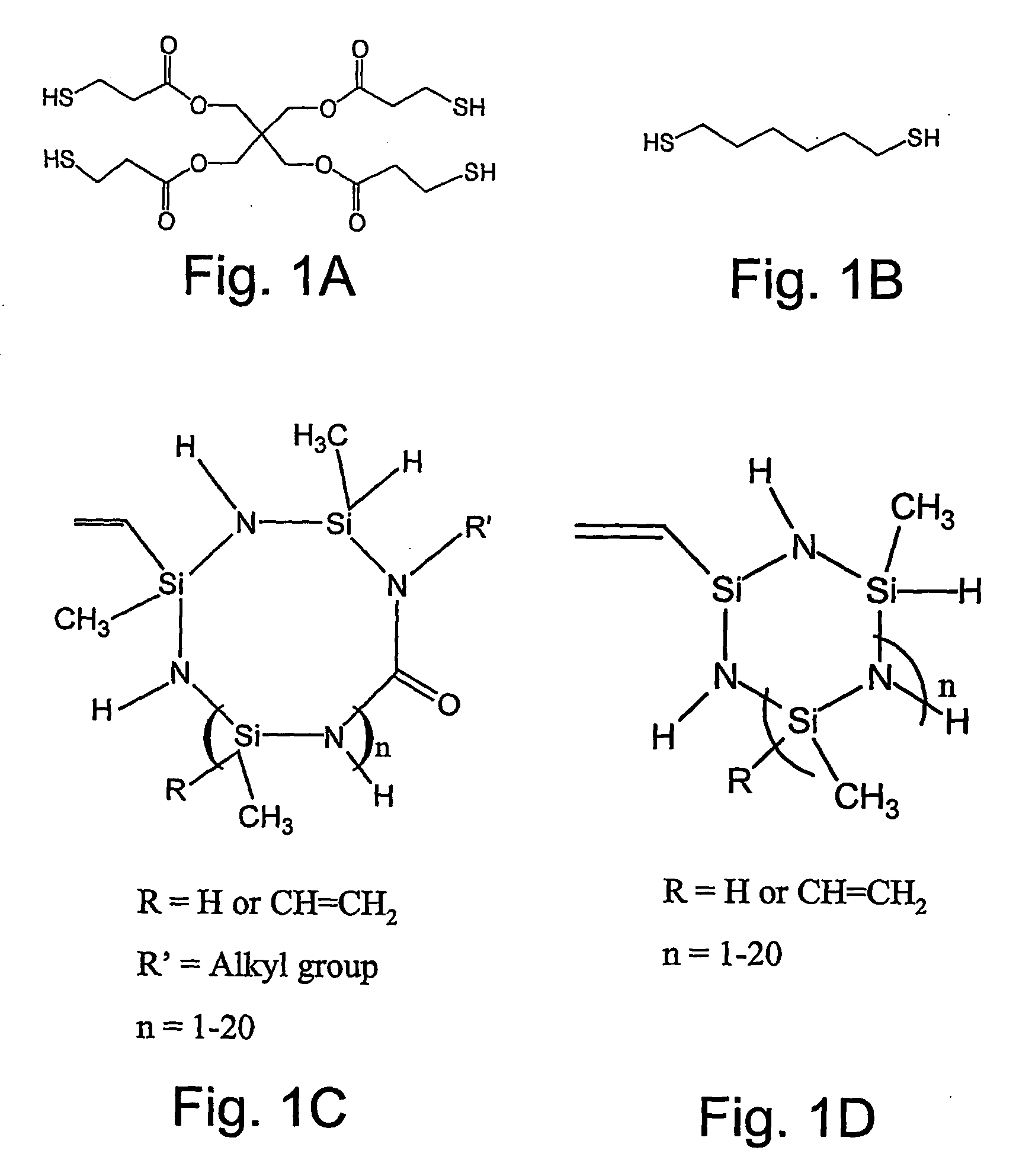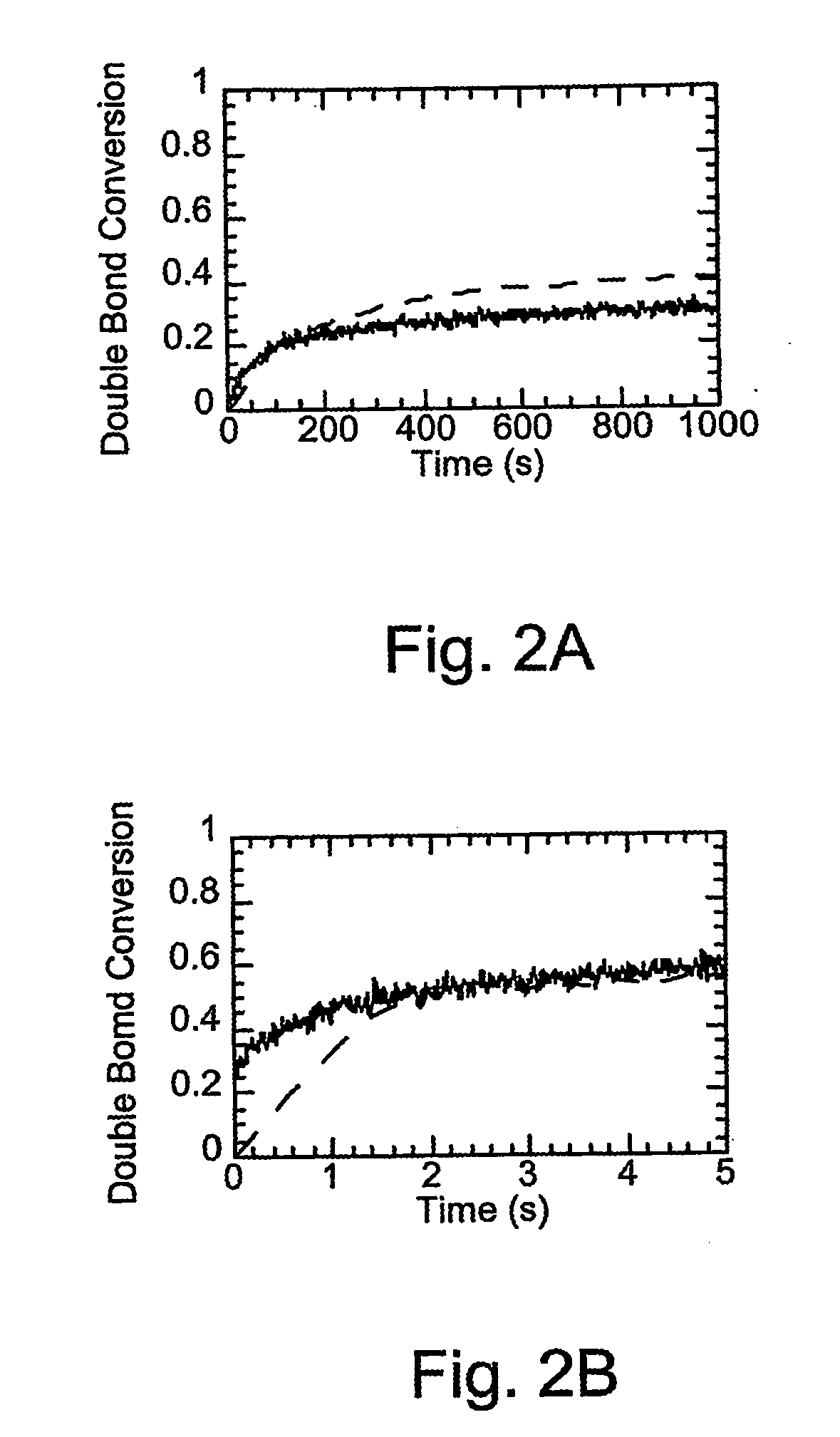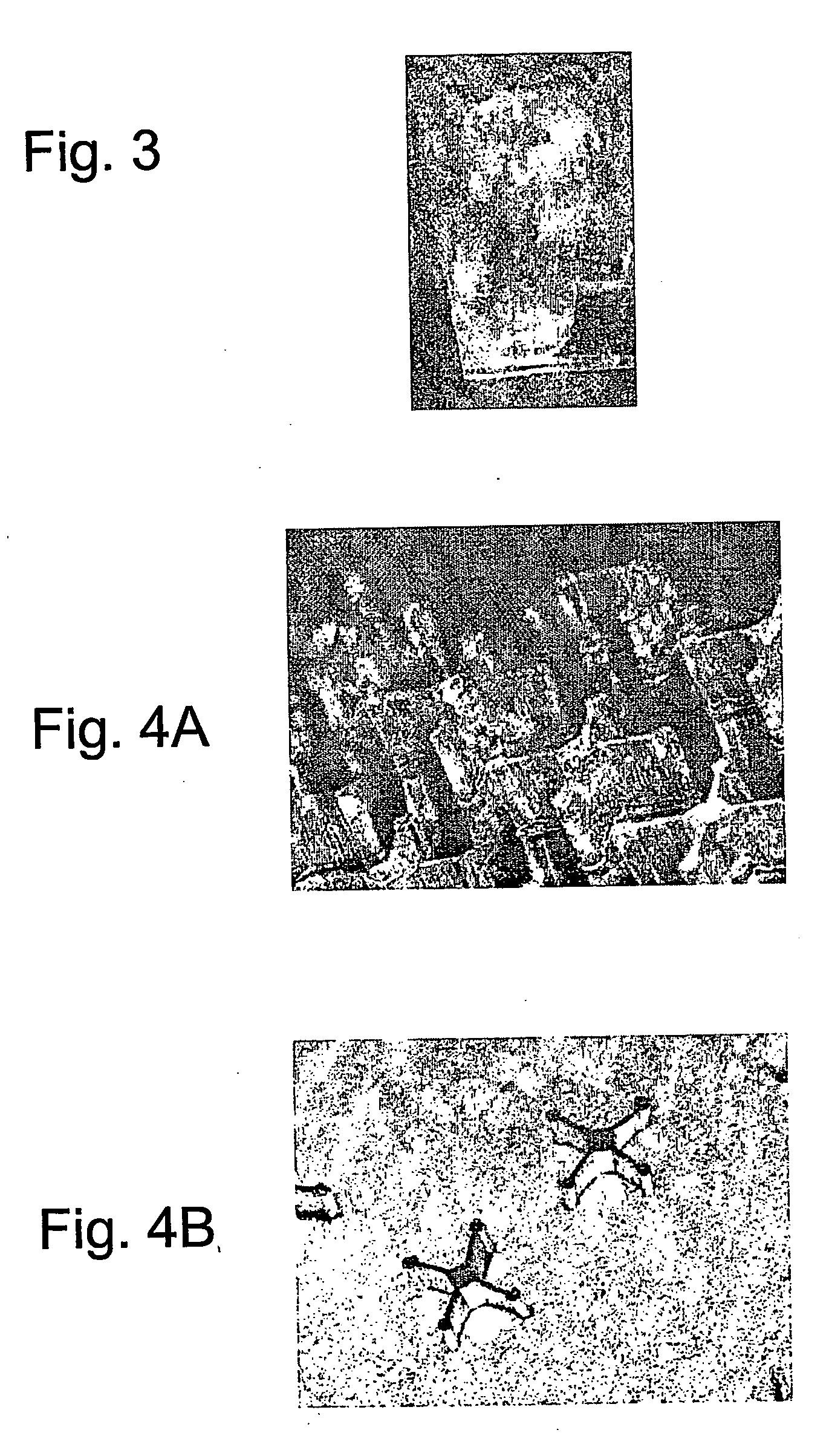Polymer derived ceramic materials
a technology of ceramic materials and polymer derived materials, applied in the field of ceramic materials, can solve the problems of difficult control in small scale structures, unsuitable high temperature materials formed by this process, and difficult to meet the needs of many applications, and achieve high polymerization speed, delay the effect of gelation and high double bond conversion
- Summary
- Abstract
- Description
- Claims
- Application Information
AI Technical Summary
Benefits of technology
Problems solved by technology
Method used
Image
Examples
example i
[0048] Experimental
[0049] The monomers utilized in this example were pentaerythiritol tetra(3-mercaptopropionate) (tetrathiol) (donated), 1,6-hexanedithiol (dithiol) (Aldrich, Milwaukee, Wis.), and vinyl containing ceramic precursor monomers, VL20 and CERASET (Kion Corporation, New York, N.Y.). The photoinitiator utilized was 2,2-dimethoxy-2-phenyl acetophenone (DMPA) (Ciba-Geigy, Hawthorne, N.Y.). All monomers and the photoinitiator were used as received, and the structures of the monomers used are shown in FIGS. 1A-D.
[0050] FTIR studies were conducted using a Nicolet 750 Magna FTIR spectrometer with a KBr beamsplitter and an MCT / A detector. Series scans were recorded, taking spectra at the rate of approximately 5 scans per second while the FTIR sample chamber was continuously purged with dry air. Samples were irradiated until the reaction was complete, as indicated by the double bond and thiol peak absorptions remaining constant. Thiol functional group conversion was monitored u...
example ii
[0063] Pentaerythritol tetra(3-mercaptopropionate) and (a KiON™ VL20 polysilazane) were copolymerized, under identical conditions (other than having far less initiator) to those of a non-thiol containing system that comprised only the polysilazane. The results showing cure times and overall conversions for bulk polysilazane (VL20 polysilazane) and a thiol / polysilazane mixture (thiol / VL20 polysilazane) consisting of 1:5 weight fraction of thiol to polysilazane monomers are presented in Table III. The samples were irradiated at 57 mW / cm2 using 6 wt % DMPA as the photoinitiator for VL20 bulk polymerization and 0.02 wt % for the thiol-VL20 polymerization. Note that the thiol-ene photopolymerization achieved the same conversion in 1-2 seconds as the traditional photopolymerization achieved in approximately 500 seconds despite the presence of 300 times more initiator in the traditional system.
TABLE IIICurePercent Double BondPolymerizationTime (seconds)ConversionBulk KiON ™ VL2060040Poly...
example iii
[0064] Thiol-ene photopolymerizations also lead to enhanced capabilities in photolithographic processes including low shrinkage and greater resolution. This is depicted in FIGS. 6A-E, which show images of a photolithographic mask, polymer, and pyrolized ceramic. More specifically, FIG. 6A shows a polymer 2-D channel of 800 μm made from 1:5 (wt ratio) of tetrathiol:VL20. FIG. 6B shows a pyrolyzed sample made from the pyrolysis of the device shown in FIG. 6A. FIGS. 6 C and D show a top view and a side view, respectively, of an 800 μm polymer 3-D channel filled with red dye. FIG. 6E shows the sample from FIGS. 6 C and D after pyrolysis with the 3-D channel. Decreased quantities of initiator molecules allow for formation and patterning of much thicker samples than can typically be achieved with traditional polymerization systems. Thiol-ene polymerizations can, in fact, be conducted without any added photoinitiator molecules (Cramer et al. (2002) Macromolecules 35:5361). Inherent in a st...
PUM
| Property | Measurement | Unit |
|---|---|---|
| Temperature | aaaaa | aaaaa |
| Molar density | aaaaa | aaaaa |
| Molar density | aaaaa | aaaaa |
Abstract
Description
Claims
Application Information
 Login to View More
Login to View More - R&D
- Intellectual Property
- Life Sciences
- Materials
- Tech Scout
- Unparalleled Data Quality
- Higher Quality Content
- 60% Fewer Hallucinations
Browse by: Latest US Patents, China's latest patents, Technical Efficacy Thesaurus, Application Domain, Technology Topic, Popular Technical Reports.
© 2025 PatSnap. All rights reserved.Legal|Privacy policy|Modern Slavery Act Transparency Statement|Sitemap|About US| Contact US: help@patsnap.com



